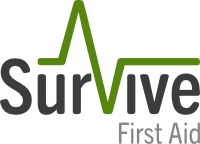ANZCOR Guideline 9.1.4 – HEAD INJURY

Guideline
Who does this guideline apply to?
This guideline applies to adult, child and infant victims.
Who is the audience for this guideline?
This guideline is for use by bystanders, first aiders and first aid providers.
1 Introduction
Head injury may be caused by a number of mechanisms including, falls, assaults, motor vehicle crashes, sporting injuries and, less commonly, penetrating injuries. A victim may sustain a significant head injury without loss of consciousness or loss of memory (amnesia). Therefore, loss of consciousness or memory loss should not be used to define the severity of a head injury or to guide management.^1
The initial first aid for a victim with head injury includes assessing and managing the airway and breathing, whilst caring for the neck until expert help arrives.
There is insufficient evidence to support or refute the use by first aiders of simplified concussion scoring systems such as the Sport Concussion Assessment Tool (SCAT), the Glasgow Coma Scale (GCS) or Alert, Voice, Pain, Unresponsive (AVPU) versus standard first aid without a scoring system. (CoSTR 2015)^2 The serious consequences of not recognising concussion in the first aid environment warrants advising all victims who have sustained a head injury, regardless of severity, to seek assessment by an health care professional or at a hospital.
2 Recognition
A brain injury should be suspected if the victim has a reported or witnessed injury, has signs of injury to the head or face such as bruises or bleeding, or is found in a confused or unconscious state. A victim may have a brain injury without external signs of injury to the head or face. Serious problems may not be obvious for several hours after the initial injury.
3 Management
-
Call an ambulance if there has been a loss of consciousness or altered consciousness at any time, no matter how brief.
-
A victim who has sustained a head injury, whether or not there has been loss of consciousness or altered consciousness, should be assessed by a health care professional.
-
Check for response: an unconscious victim should be managed according to ANZCOR Guideline 3.
-
Ensure that the airway is clear (ANZCOR Guideline 4).
-
Protect the neck whilst maintaining a clear airway (ANZCOR Guideline 9.1.6).
-
Identify and control any significant bleeding with direct pressure if possible (ANZCOR Guideline 9.1.1).
All victims who appear to have suffered a head injury (including a minor head injury) should be assessed by a health care professional before continuing with sport or other activity.
If the victim is unresponsive and not breathing normally, commence resuscitation following the Basic Life Support Flowchart (ANZCOR Guideline 8).
References
- Reed D. Adult Trauma Clinical Practice Guidelines: Initial Management of Closed Head Injury in Adults, 2nd Ed. 2011. NSW Institute of Trauma & Injury Management: North Sydney. http://www.itim.nsw.gov.au/images/3/3d/Closed_Head_Injury_CPG_2nd_Ed_Full_documen t.pdf Accessed 19/11/
- Zideman, D. A., Singletary, E. M., De Buck, E.,et al. (2015). Part 9: First aid: 2015 International Consensus on First Aid Science with Treatment Recommendations. Resuscitation, 95 , e225. http://www.cprguidelines.eu/assets/downloads/costr/S0300-9572(15)00368-8_main.pdf Accessed 19/11/
Further Reading
- ANZCOR Guideline 2 Managing an Emergency
- ANZCOR Guideline 3 Recognition and First Aid Management of the Unconscious Victim
- ANZCOR Guideline 4 Airway
- ANZCOR Guideline 5 Breathing
- ANZCOR Guideline 8 Cardiopulmonary Resuscitation
- ANZCOR Guideline 9.1.6 Management of Suspected Spinal Injury
- ANZCOR Guideline 9.2.3 Shock
